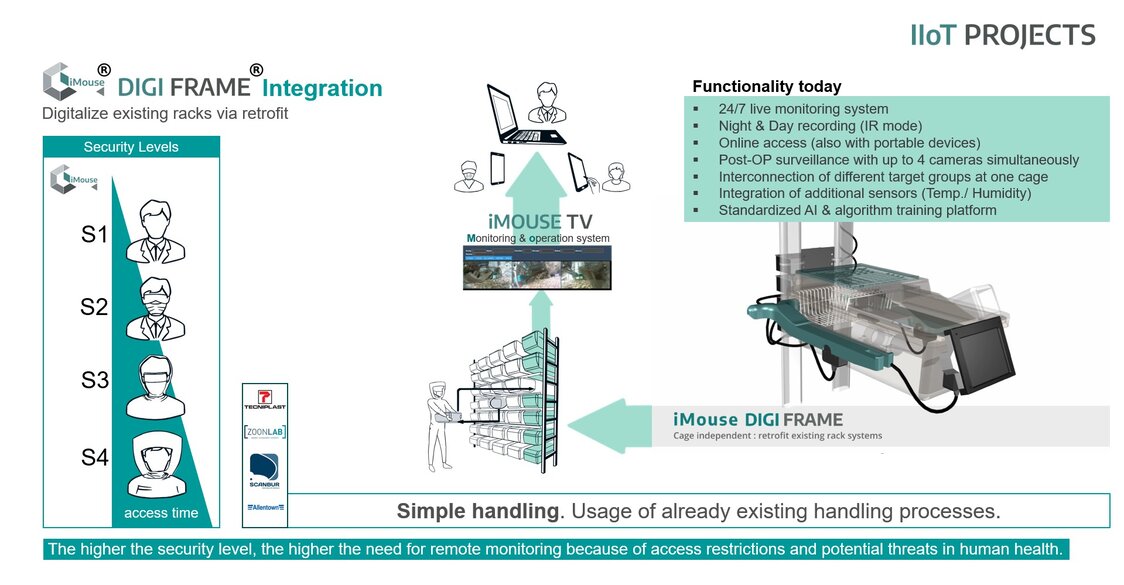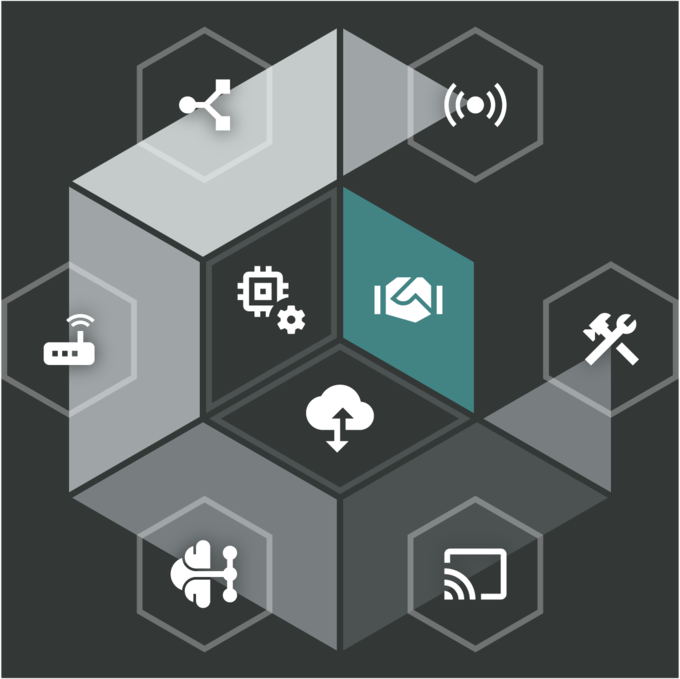The challenge
In laboratory animal husbandry, it is common practice to continuously monitor and evaluate the behavior, responses, and weight of laboratory animals. In most cases, these human interventions do not correspond to the circadian rhythms of the animals. The daily in-eye monitoring of laboratory animals and the documentation of the resulting data is regulated and required by law. In order to promptly notice a possible deterioration in animal welfare and to be able to intervene if necessary, animals undergoing stressful experiments must even be subjected to in-eye examination several times a day. Each of these interventions triggers a stress situation throughout the home cage. This has been shown to affect animal behavior, general well-being, and metabolism to the point of phenotypic outcome, even when the data collection method is automated.
In addition, the common method of monitoring provides a snapshot of the animals housed in the home cage. The overarching goal of the project is to provide stress-free and continuous monitoring of the experimental animals in their respective home cages, which is also consistent with their circadian rhythms.

The result:
The IIoT-Guidance and IIoT-Projects team, together with partner HPI, has developed an end-to-end automated monitoring system for laboratory animals housed in standard cages. This system integrates completely with or does not change existing workflows at VTH, and the low hardware costs can be passed on to the customer, funding the R&D team to expand the portfolio into other project components such as automated mouse scales and connectivity to the local ERP system. Furthermore, the iMouse DIGI Frame can be used as a standardized data mining platform across the board and for training an AI where further research is done with partners. For this purpose, the iMouse TV (CCTV and data agent platform) serves as the technical foundation, a scalable open hardware and software solution. By using easy to integrate camera modules, especially the service becomes easy and cost effective to realize compared to other solutions.
